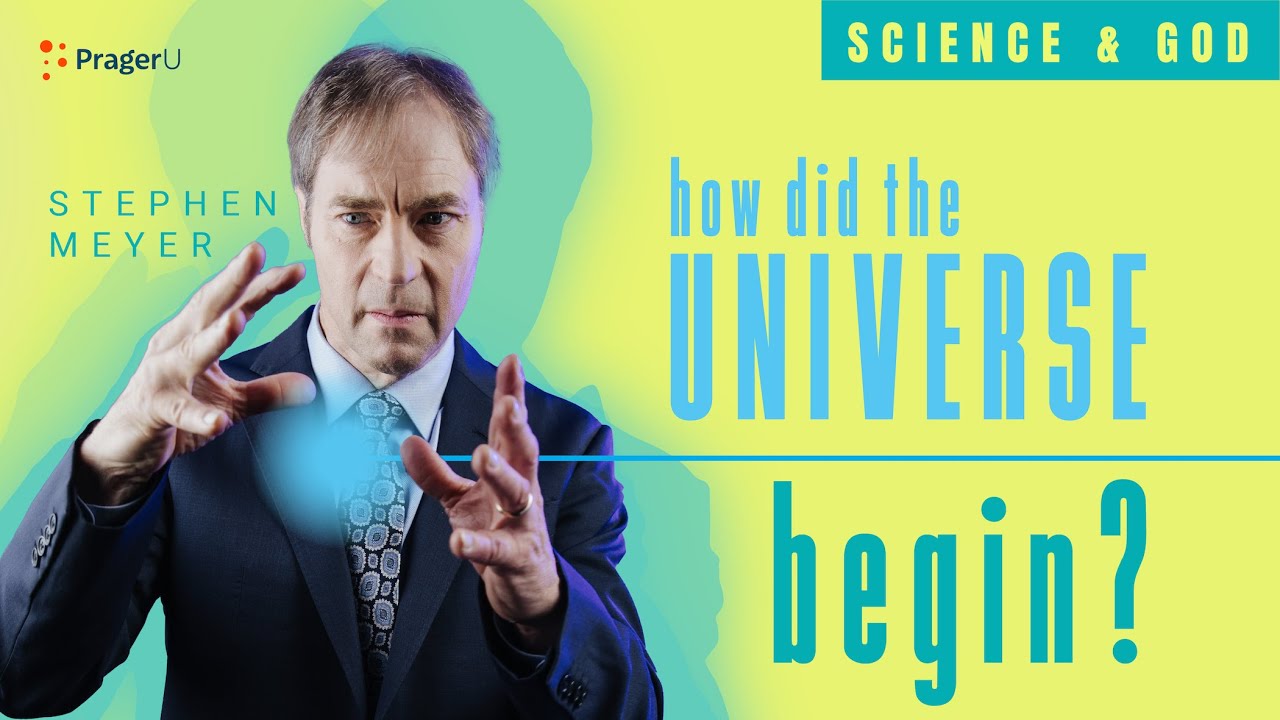How Did the Universe Begin?
View at PragerUWas the universe always here? Or did it have a beginning? If so, how did it start?
From ancient times, philosophers and theologians have debated these questions.
But it wasn’t until the 20th century that a series of stunning scientific discoveries finally enabled us to get some answers.
The story begins in 1912 when American astronomer Vesto Slipher observed that light coming from distant “nebulae” (clouds of dust and gas in outer space) appeared redder than expected.
Why was this important?
Here’s where your high school science pays off. Remember learning about the Doppler effect? The frequency of sound, light, or other waves changes as the source and observer move toward (or away from) each other. To demonstrate this, your science teacher likely played a recording of a train whistle: the pitch of the whistle lowers — that is, the sound wave stretches out — as the train recedes into the distance.
Well, the same thing happens with light.
If a distant star or galaxy is moving away from us, the light coming from that object will also stretch out. Since in the spectrum of visible light, red light corresponds to the longest wave lengths physicists say light that has been stretched out has been “red shifted.”
This evidence of “red-shift” suggested the nebulae were moving away from us.
In 1924 astronomer Edwin Hubble, working with a new 100-inch telescope on Mt. Wilson in California, showed that Slipher’s “nebulae” were not just clouds of gas around distant stars, but actually distant galaxies beyond our Milky Way.
Soon after that, the Belgian physicist George Lemaître correlated Slipher’s red-shift data with Hubble’s measurements of the distances to other galaxies. Lemaître showed that galaxies that were farther away were receding faster than those close at hand. That suggested a spherical expansion of the universe in all directions of space, as if the universe were expanding like a balloon from a singular explosive beginning — from a “big bang.”
Oddly, Albert Einstein had earlier tumbled to this idea but then dismissed it.
Einstein’s new theory of gravity known as general relativity envisioned massive bodies altering the curvature of space like a bowling ball making a depression on a trampoline.
Einstein’s concept of gravity implied that space would contract in on itself unless gravity was continually counteracted by the expansion of space. For this reason, Einstein posited a constantly acting repulsive force — known as the cosmological constant — to counter gravitational attraction. But that implied a dynamic and expanding universe … and also a beginning.
To avoid this conclusion, Einstein altered his own equations by arbitrarily assigning a precise value to the force of expansion to ensure that the strength of gravity and the repulsive force exactly balanced. Thus he depicted the universe in a perfectly poised, static state—neither expanding from a beginning, nor contracting toward a collapse.
But then with Slipher and Hubble’s discoveries, the heavens talked back. In 1927, Lemaître informed Einstein (in a taxi cab, no less) about the red shift evidence for an expanding universe. In 1931, Einstein visited Hubble at the Mt. Wilson observatory and viewed the evidence for himself. Later, he announced, to his great credit, that denying the evidence for the universe having had a beginning was “the greatest blunder of my scientific career.”
Throughout the 20th century, physicists proposed other theories that denied a cosmic beginning. One by one new evidence showed each to be inadequate. By the 1990s, the Big Bang theory had prevailed as the best explanation for multiple lines of astronomical evidence.
So why was such evidence upsetting to Einstein and to many other scientists? Princeton University physicist Robert Dicke, explained: “[an infinitely old universe would] relieve us of the necessity of [explaining] the origin of matter at any finite time in the past.”
And so it would.
But if the physical universe of matter, energy, space and time had a beginning, it becomes extremely difficult to conceive of a physical or material cause for the origin of the universe. After all, it was matter and energy that first came into existence at the Big Bang. Before that, no matter or energy would have yet existed to do the causing. Consequently, whatever did cause the universe to exist would need to be immaterial and exist beyond space and time.
To many scientists and philosophers all this sounds an awful lot like the first words of the Bible: “In the beginning God created the Heavens and the Earth.”
